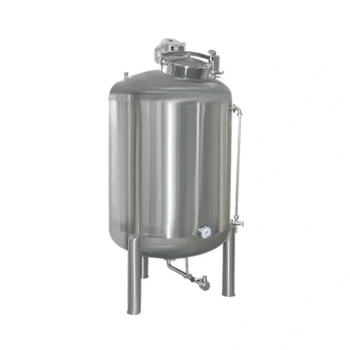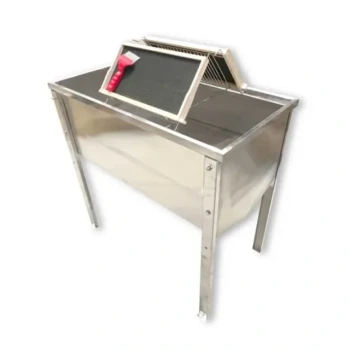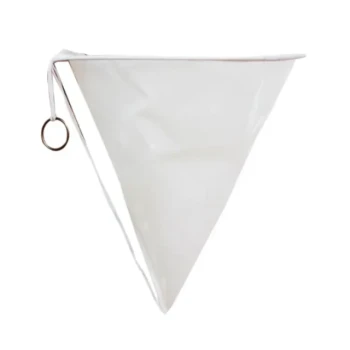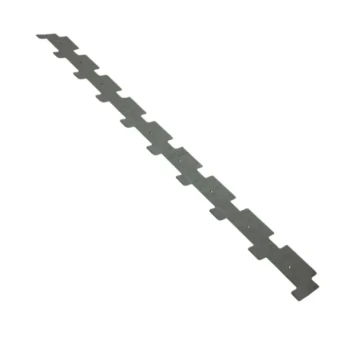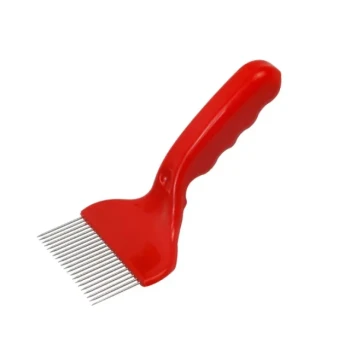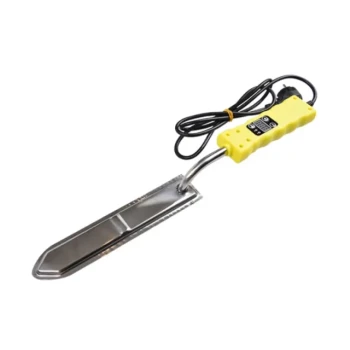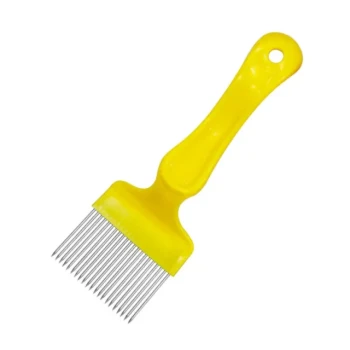Yes, you can absolutely store honey in stainless steel containers. In fact, food-grade stainless steel is one of the preferred materials used by professional beekeepers and honey producers for bulk storage and processing due to its durability and non-reactive properties.
The critical factor is not the material itself, but its quality. Honey can be safely stored indefinitely in food-grade stainless steel with an airtight seal, which prevents both chemical reactions and moisture absorption.
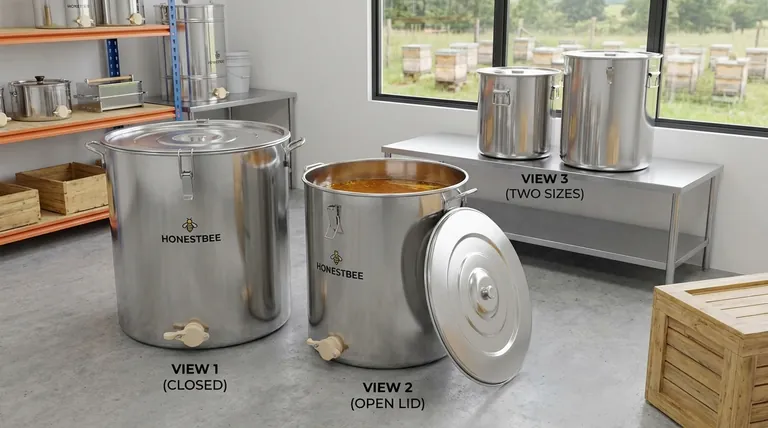
Why Container Choice Is Crucial for Honey
To understand why stainless steel is an excellent choice, it's important to recognize honey's two primary chemical properties: it is both slightly acidic and highly hygroscopic.
The Impact of Honey's Acidity
Honey has a naturally low pH, typically between 3.5 and 4.5. This acidity is a key reason it's so well-preserved and resistant to bacteria.
However, this same acidity can cause reactions when it comes into contact with certain metals, such as aluminum, copper, or low-grade steel. These reactions can leach metallic flavors into the honey and are not considered food-safe.
The Role of Food-Grade Stainless Steel
Food-grade stainless steel (like types 304 or 316) is specifically engineered to be non-reactive and corrosion-resistant.
Its surface is non-porous and does not react with the natural acids in honey. This is precisely why it is the industry standard for extraction equipment, filters, and storage tanks where honey has prolonged contact.
The Challenge of Honey's Hygroscopic Nature
Honey is hygroscopic, meaning it readily absorbs moisture from the surrounding air. If its water content rises too high (above ~18%), naturally occurring yeasts can activate and cause fermentation.
This makes the quality of the container's seal just as important as the material itself. An airtight lid is non-negotiable for long-term storage.
Common Pitfalls and Key Considerations
Choosing the right container involves more than just picking a material. The most common storage failures are almost always related to the seal or the storage environment.
Pitfall 1: Using Non-Food-Grade Metal
The vague warnings against storing honey in "metal" often stem from the risk of using reactive metals. Never store honey in a container if you cannot confirm it is made from food-grade stainless steel, glass, or food-grade plastic.
Pitfall 2: Neglecting the Seal
A premium stainless steel container with a poor-fitting lid is worse than a simple glass jar with a perfect seal. A faulty seal will allow moisture in, leading to fermentation and ruining the honey, regardless of how inert the container is.
Pitfall 3: Ignoring Storage Conditions
The ideal environment for honey is a cool, dry, and dark place. Light and heat do not "spoil" honey but can degrade its delicate enzymes, aromas, and flavors over time. Storing your container away from sunlight and heat sources is essential.
Making the Right Choice for Your Goal
Your ideal storage container depends on your specific purpose.
- If your primary focus is long-term, bulk storage: Food-grade stainless steel buckets or drums with locking, airtight lids are the professional standard for protecting large quantities of honey.
- If your primary focus is kitchen use and presentation: Glass jars with screw-on lids are perfect, as they are inert, provide a great seal, and allow you to see the honey.
- If your primary focus is lightweight, economical storage: Food-grade plastic (HDPE) pails or tubs are a safe and practical alternative to stainless steel or glass.
Ultimately, ensuring your container is made from a food-safe material and has an airtight seal is the key to preserving your honey's quality for years.
Summary Table:
| Storage Goal | Recommended Container | Key Feature |
|---|---|---|
| Long-Term Bulk Storage | Food-Grade Stainless Steel | Durable, non-reactive, professional standard |
| Kitchen Use & Presentation | Glass Jar with Lid | Inert, excellent seal, visually appealing |
| Lightweight & Economical | Food-Grade Plastic (HDPE) | Safe, practical, cost-effective |
Ready to protect your honey harvest with professional-grade equipment?
As a trusted wholesale supplier to commercial apiaries and distributors, HONESTBEE provides the durable, food-grade stainless steel tanks and airtight containers that beekeepers rely on for bulk storage. Our equipment is designed to preserve honey quality, prevent fermentation, and streamline your operation.
Contact our expert team today to discuss your bulk storage needs and get a quote.
Visual Guide
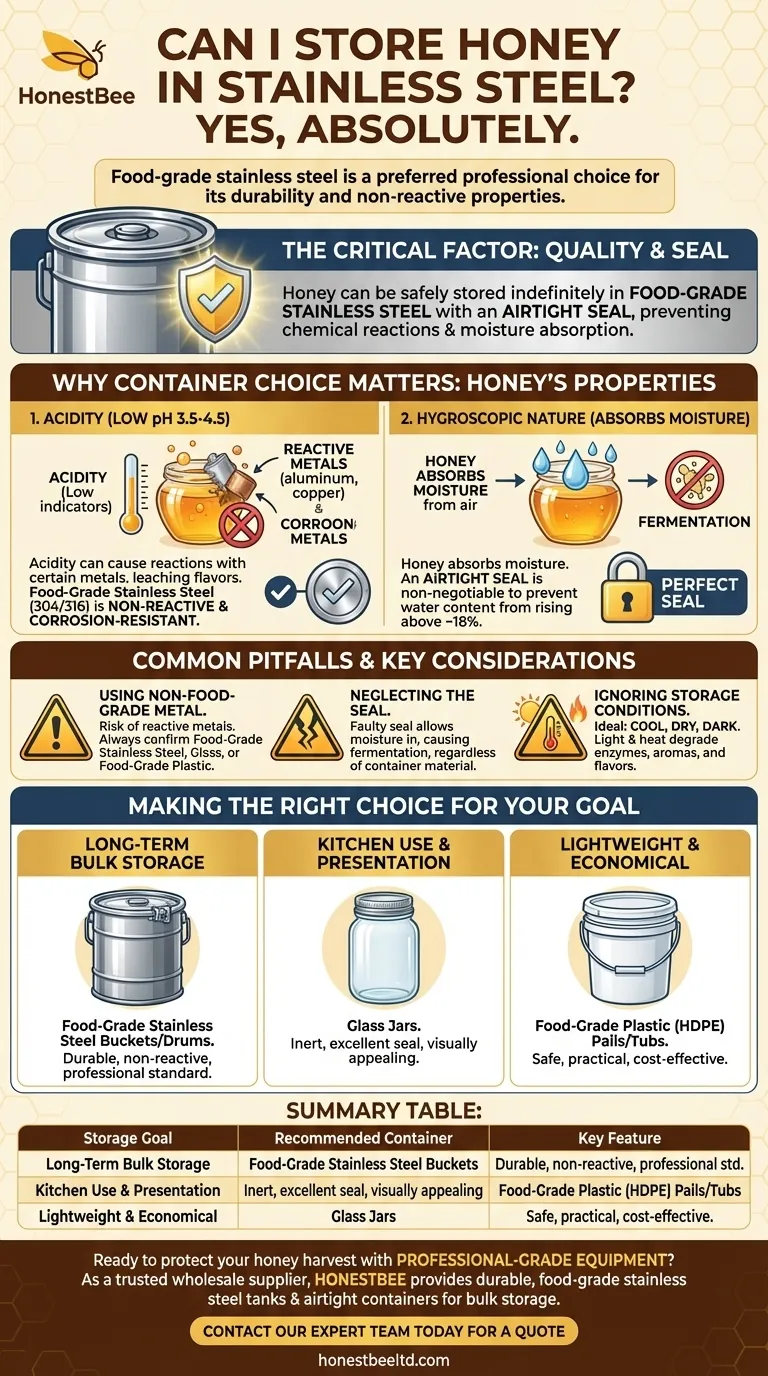
Related Products
- Stainless Steel Honey Storage Tank with Lid for Honey
- Professional Honey Storage Tank with Agitation System
- Stainless Steel Honey Storage and Settling Tank with Double Strainer
- Stainless Steel Uncapping Tank with Stand and Strainer
- Stainless Steel Heated Honey Tank Warming Heating Tank
People Also Ask
- Which container is best for storing honey? Preserve Purity & Flavor with the Right Choice
- How long to leave honey in a settling tank? Optimize Your Clarification Process
- What is the purpose of a honey storage tank? Streamline Your Honey Processing for Quality & Efficiency
- What type of tank is used in the honey drying process? Master Gentle Moisture Removal for Premium Honey
- How to store honey before bottling? Keep Your Harvest Perfect Until It's Jarred

